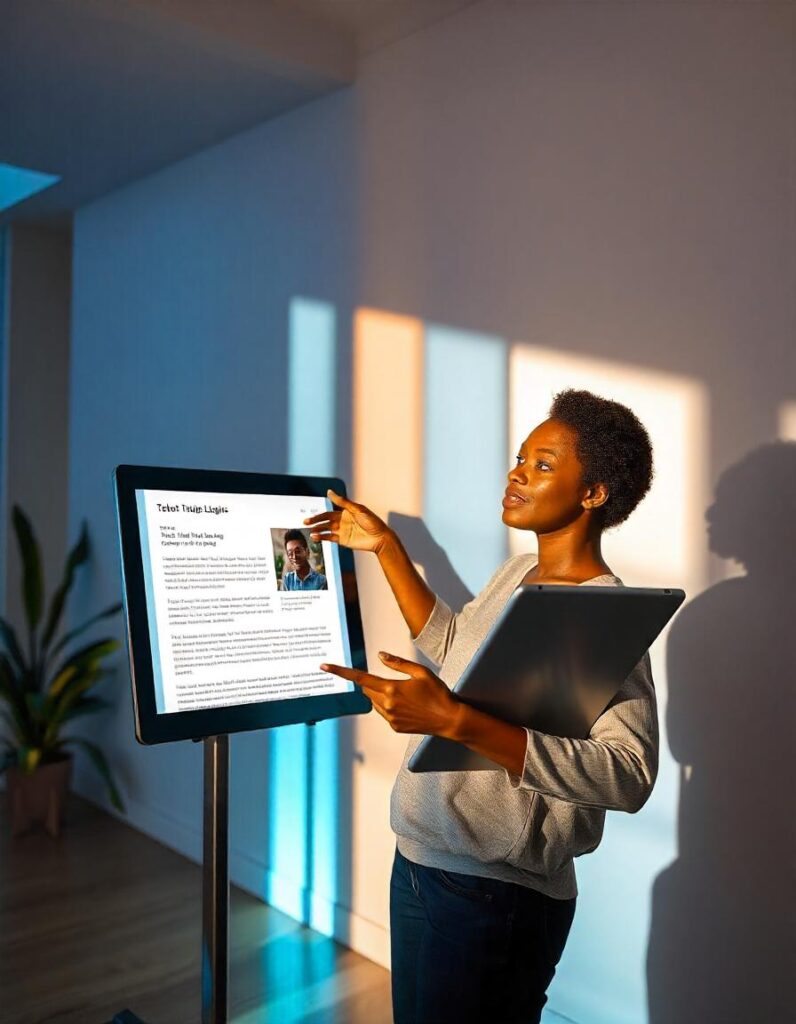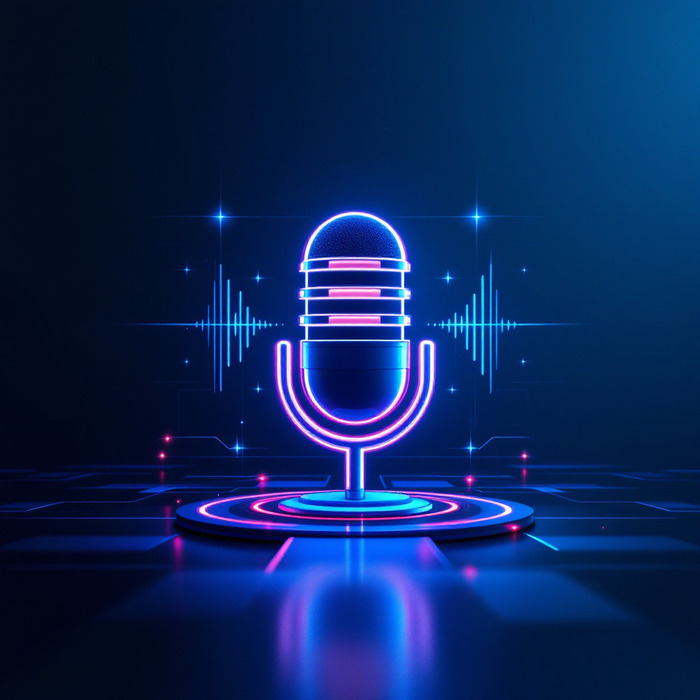
Want to reach more people with your blog content? Learn how blog to audio conversion can open your content to listeners who prefer audio over reading.
Why Convert Your Blog Posts to Audio?
Reading long articles isn’t always convenient. Whether you’re commuting, exercising, or doing household tasks, sometimes listening is simply easier than reading. That’s where blog to audio conversion comes in handy. By offering audio versions of your posts, you can reach people during moments when reading isn’t practical.
The shift to audio makes perfect sense. Many people spend hours each day commuting or multitasking, making it hard to sit down and read blog posts. Converting your content to audio lets them tune in while staying productive. Plus, audio versions make your content accessible to those who have trouble reading long texts or simply prefer listening.

The Real Value of Audio Content
Audio blog content brings several practical benefits:
- Makes content accessible during busy activities
- Reduces screen fatigue for regular readers
- Helps people with visual impairments access your content
- Enables learning during exercise or commutes
- Provides an alternative for those who process information better through audio
The numbers back this up too. Audio content engagement continues to rise as more people discover the convenience of listening while multitasking. Many readers now expect audio options on their favorite blogs.
Getting Started with Blog to Audio Tools
Converting blog posts to audio is straightforward with modern text to speech conversion tools. You don’t need technical expertise or expensive equipment – just the right software and basic understanding of audio content principles.
Selecting the Right Text-to-Speech Software
To get started with blog to audio conversion, you’ll need a good text-to-speech (TTS) tool. There are several options available, and they differ in voice quality, language options, and price. Let’s look at some of the best tools you can use right now:
Popular options include:
- Murf AI – Offers high-quality AI voices with excellent natural speech patterns and emotion control
- Lovo AI – Features over 500 voices across multiple languages and accents
- Play.ht – Provides access to 900+ voices in 142 languages with natural-sounding results
- VoiceoverMaker – Specializes in professional-grade voice synthesis with emotional range
Preparing Your Blog Content
Before starting the blog to audio conversion process, proper content preparation ensures optimal results. This preparation phase is crucial for creating engaging audio blog posts that maintain listener interest and effectively convey your message.
Essential preparation steps include:
- Remove special characters and formatting that might confuse TTS engines
- Break down long paragraphs into digestible segments
- Check pronunciation of technical terms and industry jargon
- Include proper punctuation for natural pauses
- Optimize content structure for audio flow

Step-by-Step Conversion Process
The journey from text to audio requires attention to detail and a systematic approach. A well-planned conversion process ensures quality output and saves time in the long run. Let’s explore each step in detail to help you create engaging audio versions of your written content.
Text Cleanup and Optimization
Creating engaging audio content from text starts with proper preparation. This foundational step determines the quality of your final audio output. A thorough cleanup process helps the TTS engine interpret your content correctly and produce natural-sounding results.
Consider these optimization techniques:
- Replace symbols with written equivalents
- Spell out abbreviations and acronyms
- Format numbers and dates consistently
- Add phonetic spellings for complex terms
- Remove or modify visual references
Voice Selection and Testing
The voice you choose becomes your content’s audio identity. This crucial phase of blog to audio conversion requires careful consideration of various factors that influence listener engagement and retention. Take time to experiment with different voices to find the perfect match for your brand and content style.
Key selection criteria include:
- Speech rate and clarity for optimal comprehension
- Accent and pronunciation accuracy
- Emotional tone alignment with content
- Gender and age perception matching target audience
- Voice consistency across content pieces
Advanced Audio Parameters
Fine-tuning your text to speech output involves adjusting various technical parameters. These settings help create a more natural and engaging listening experience that keeps your audience connected to your content.
Adjust these settings for optimal results:
- Speech rate for different content sections
- Volume levels and normalization
- Pitch variations for emphasis
- Pause lengths between segments
- Audio compression settings
Enhanced Production Techniques
Creating professional-quality audio blog content requires more than basic conversion. Adding production elements and maintaining high standards elevates your content above basic text-to-speech output.
Adding Audio Enhancements
Take your blog to audio conversion to the next level by incorporating professional audio elements that enhance the listening experience. These additions help maintain listener attention and create a more polished final product.
Consider including:
- Professional music intros and outros
- Subtle sound effects for section transitions
- Ambient background music at appropriate moments
- Voice modulation for quoted content
- Audio branding elements
Quality Control Process
Maintaining high standards in your audio content production requires thorough quality control. This step ensures your listeners receive professional-grade content that represents your brand well.
Quality control checklist:
- Pronunciation accuracy across all terms
- Natural flow and pacing throughout
- Audio clarity and consistency
- Background noise elimination
- Proper handling of transitions
Distribution and Promotion Strategy
A comprehensive distribution plan ensures your audio blog posts reach their intended audience. This multi-channel approach maximizes your content’s visibility and accessibility.
Distribution Channels
Once you’ve completed the blog to audio conversion, consider these platforms for sharing:
- Podcast networks and directories
- YouTube and video platforms
- Social media channels
- Embedded blog audio players
- Email newsletters with audio links
Promotion Best Practices
Maximize the reach of your audio content through strategic promotion:
- Cross-promote on existing platforms
- Share snippets and previews
- Create platform-specific promotional content
- Engage with listener feedback
- Optimize titles and descriptions for search
Measuring Success and Optimization
Understanding your audio content performance helps refine your strategy and improve future conversions. Implement comprehensive tracking to gather meaningful insights about your audience’s engagement with your audio content.
Key Performance Indicators
Track these metrics to evaluate success:
- Average listening duration
- Engagement rates across platforms
- User feedback and comments
- Platform-specific analytics
- Conversion rates from listeners to subscribers
Continuous Improvement Process
Use data-driven insights to enhance your blog to audio conversion process:
- Analyze listener feedback regularly
- Test different voice styles and formats
- Optimize content length based on engagement
- Refine production techniques
- Update distribution strategies
Conclusion
Blog to audio conversion represents an essential adaptation in modern content strategy. By following these comprehensive guidelines and continuously refining your process, you’ll create engaging audio versions that serve your audience effectively and expand your content’s reach. The future of content consumption increasingly includes audio formats, making this transformation not just beneficial but necessary for staying competitive in the digital space.
Ready to begin your blog to audio conversion journey? Use these detailed insights and techniques to transform your written content into engaging audio that captures and keeps your audience’s attention while building a stronger connection with your listeners.
If you found this topic interesting, you might also enjoy these articles:
- Text-to-Speech for Content Creators – Learn how to turn your ideas into engaging audio.
- Text-to-Speech for e-Learning – Discover how to create effective audio lessons.
- Free Text-to-Voice Tools Online – Explore free options to generate audio content.
These articles provide further insights into the potential of text-to-speech technology.
Faqs about blog to audio conversion
How can I convert a blog post to audio?
You can convert a blog post to audio by using TTS tools like Narakeet or Murf AI. The process generally involves:
- Choosing a TTS Tool: Select a platform such as Narakeet, Riverside, or Murf AI that offers TTS services.
- Copying the Text: Copy the text of your blog post.
- Pasting into the Tool: Paste the text into the designated area of the TTS tool.
- Selecting Voice Options: Choose from various voice options and languages offered by the tool.
- Generating Audio: Click on the generate or create button to produce the audio file, which can typically be downloaded in formats like MP3 or WAV
What are the best platforms for converting text to audio?
Some of the top platforms for converting text to audio include:
- Narakeet: Offers realistic AI voices and supports multiple languages. It allows quick conversion of articles into audio files.
- Murf AI: Known for its human-like voices, it provides options to adjust pitch, speed, and other voice characteristics for a more natural sound.
- Riverside: This platform not only converts text to speech but also allows users to create video content with overlaid audio
Do I need to edit my blog post before conversion?
Yes, it is often necessary to make slight edits to your blog post before converting it to audio. This includes:
- Creating a Conversational Tone: Adjusting the text to sound more natural when spoken, rather than read.
- Condensing Content: If your blog post is lengthy, consider summarizing it or breaking it into smaller sections that fit within character limits of some TTS tools (e.g., Riverside allows up to 2,000 characters at a time)
Can all types of content be converted to audio?
Not all content is suitable for audio conversion. The types of content that work well include:
- Storytelling (both long and short)
- News articles
- Testimonials
- How-to guides
- FAQs
Conversely, content that relies heavily on visuals or complex formatting may not translate effectively into audio
How do I embed audio files into my blog?
To embed an audio file into your blog:
- Upload the Audio File: After generating your audio file, upload it to your website’s media library (e.g., WordPress).
- Use an Audio Player Plugin: If using WordPress, you can utilize plugins like Play.ht that automatically add an audio player to your posts.
- Positioning the Player: You can place the audio player at various points in your post for optimal engagement
Useful Resources for Blog to Audio Conversion:
https://www.getwoord.com/pages/turn-your-blog-posts-into-podcasts
https://www.readspeaker.com/blog/convert-articles-to-audio/
https://www.contentpowered.com/blog/convert-wordpress-audio-podcasts/



